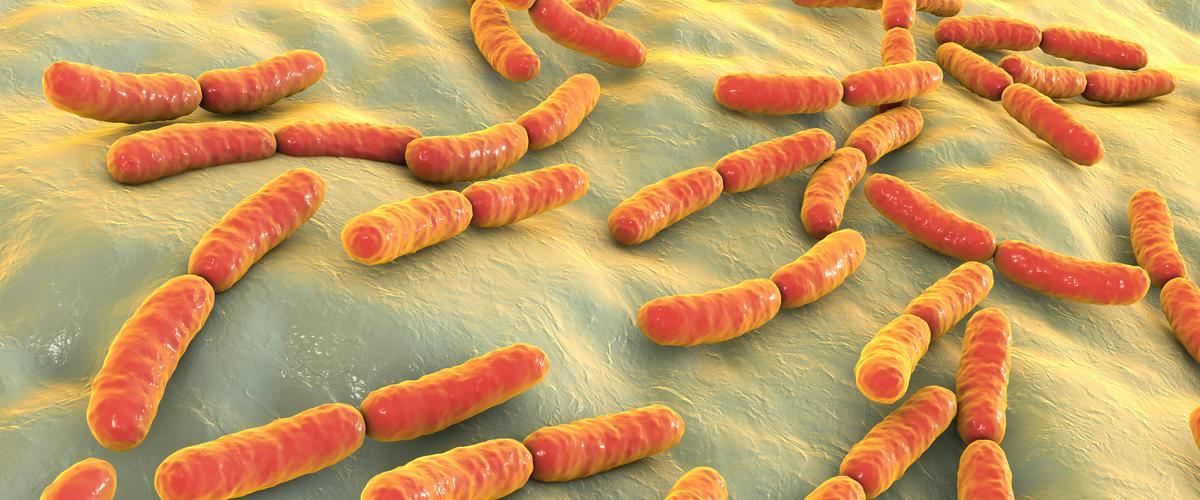- The organic cultivation of cannabis is becoming increasingly popular throughout the world, which could be linked to the fact that we’re becoming more and more aware of how fragile our resources are at this time in history.
- Organic farming has a bright future ahead as a way to preserve the planet and protect the health of its inhabitants.
- The key to success in organic farming lies in the quality of the soil; hence the importance of LAB, whose action has a direct and positive impact on the equilibrium of soil life.

The microorganisms that live in the soil play a key role in the transport, transformation and assimilation of the organic nutrients needed for the development and balance of its life, and consequently for the optimum growth of cannabis plants.
These microorganisms include bacteria, beneficial microbes, fungi, symbiotic plants, and many other living organisms.
This is a wisely organised food chain that establishes a hierarchy that works in perfect harmony. A totally autonomous community that feeds and protects marijuana crops in a natural way, as their presence in the soil provides everything that's required.
In this post we want to stress the importance of the presence of lactic acid bacteria in the soil, which are capable of improving the quality of cannabis flowers, providing strength and enhancing the quality and intensity of their terpenes and flavonoids.
What are lactic acid bacteria?
Lactic acid bacteria contain microbes that are used for the production of fermented foods, such as dairy products (yoghurt, cheese); fermented vegetables (sauerkraut, olives, gherkins); cooked cold meats (like Iberian ham); fermented alcoholic drinks (wine, beer, cider); or even sourdough bread.

LAB are also used as a sanitiser in the lactic fermentation process. When added to a solid or a liquid that contains sugar, lactic acid bacteria consume and digest the sugar before releasing lactic acid as a metabolite or byproduct.
On top of being totally harmless for all living beings, lactic acid bacteria also provide benefits for humans as well as for cannabis grows. Our body, especially our digestive tract, contains a great deal of beneficial bacteria that are required for a good equilibrium.
It's no accident that many doctors have been recommending the use of probiotic food supplements in the last few years to improve gastric activity.
Lactic acid bacteria improve the food decomposition process and facilitate and accelerate the metabolisation mechanisms, for instance by helping to transport the nutrients to the right place.
Benefits of lactic acid bacteria for cannabis plants
When lactic acid bacteria metabolise the sugars, a substance called hexanoate is created, which is a short-chain fatty acid. The good news is that, in our case, cannabis plants produce cannabinoids and terpenes by synthesising hexanoate.
Therefore, by adding hexanoate to their grows, growers provide the basis for a higher number of more intense terpenes, flavonoids and cannabinoids. Another benefit of these bacteria is that they facilitate the assimilation of organisms present in the soil.
In addition, the natural symbiotic action of the microorganisms ensures effective protection against a great number of diseases produced by different types of fungi and harmful bacteria.
Lactic acid bacteria help cannabis plants become bigger, more resistant and productive, and also help increase their concentration of active principles.
How to provide your cannabis plants with lactic acid bacteria?
Lactic acid bacteria are soil-borne facultative anaerobic microbes that can be found at a maximum depth of 15 cm and don't need much oxygen to survive.
Therefore, you can enrich the soil by adding lactic acid bacteria directly on the surface, although this method seems to be controversial in certain circles.
They're very easy to apply: simply add lactoserum (LAB) to water and spray directly on the soil or over the plants. Ideal application entails spraying lactoserum in the initial phase of every stage of development of the plants so as to homogeneously organise and balance the life in the soil.
Precautions to take during the use of lactic acid bacteria
If you're adding lactic acid bacteria to your plants, it is key not to use biocidal products (i.e. pesticides or chemical fertilisers) that could eradicate the population of beneficial biological agents in the soil, thereby ruining all the previous work, as well as jeopardising the soil balance. Besides, this could also promote the appearance and development of harmful microorganisms.
It is best not to stir the soil because the bacteria on the top layer of the substrate could disappear due to the effect of UV rays. This is the main reason why lactic acid bacteria should always be added at night, or when all the lighting has been switched off.
Preparation of homemade lactoserum
It is very likely that you already have all the ingredients that you need at home to produce beneficial lactoserum to help balance your growing medium.
Ingredients
- 350 g rice
- 250 ml water
- 1 L milk, preferably organic as industrial milk may contain antibiotics.
Materials
- Wide-mouthed glass containers
- Muslin cloths
- An elastic band
- Paper bags
- A clear jug
Preparation
- Use mineral water (chorine-free) if at all possible. If you're using tap water, let it sit and aerate for 24 hours so that the chlorine evaporates.
- Put equal amounts of water and rice in the container.
- Mix well and then use a muslin cloth to strain the liquid into a second container. The solution should look milky at this stage.
- Place the container in a paper bag and wrap it in a cloth to avoid exposure to light.
- Place the container in a warm, dark place.
- Check daily for bottom residue and to make sure that the mixture releases a bitter smell that tells you that the fermentation process is on its way. If the room temperature stays between 25 and 30ºC, this will take between 2 and 3 days. However, if the temperature is lower, the process can take up to a week or even longer.
- Pour the milk into the jug.
- Add the fermented rice water, straining it with a muslin cloth.
- Cover the jug with a cloth and secure it with an elastic band. Make sure it's secure but that there's still an airflow.
- Put the jug back in the paper bag or wrap it with a cloth to avoid light exposure.
- Place it in a cool, dark place.
- Check the container daily until you can see three distinct layers. This process can take up to a week.
- Remove the top layer (curd) and discard.
- The lactoserum is the middle layer that has a yellowish colour. Strain it through another muslin cloth into a clean container so the serum becomes purer and healthier. Be careful not to pour or mix any residue from the bottom layer.
- Seal the container loosely so the gas produced by the fermentation can escape.
- Refrigerate.

The lactoserum is a 'living liquid' that contains lactic acid bacteria, i.e. living microorganisms. It will continue evolving and producing little bubbles that release a sweet and sour aroma.
If the serum releases an unpleasant smell, this is a sign that it contains harmful bacteria. In this case, the only solution is discarding it. With regards to its use, dilute 30 ml lactoserum in 1 L chlorine-free water, and use with a spray bottle. You can prepare up to 500 L organic fertiliser with just one batch of serum.
Should you not have the means to keep your serum refrigerated, you can stabilise it by adding molasses or brown sugar to the mix. This gives your LAB something to eat until they're sprayed over your cannabis plants.




Comments from our readers
There are no comments yet. Would you like to be the first?
Leave a comment!Did you like this post?
Your opinion about our seeds is very important to us and can help other users a lot (your email address won't be made public).